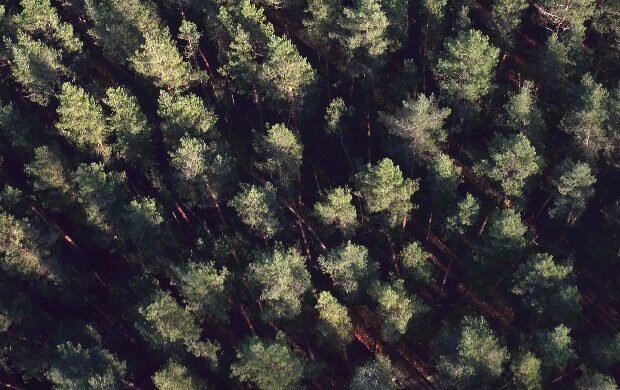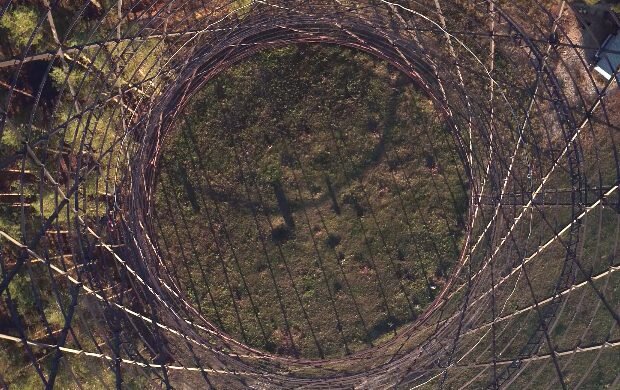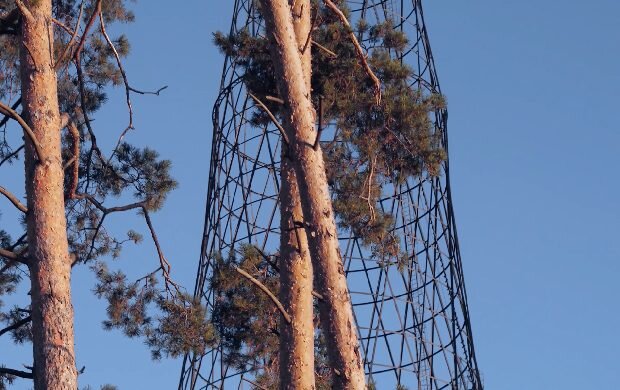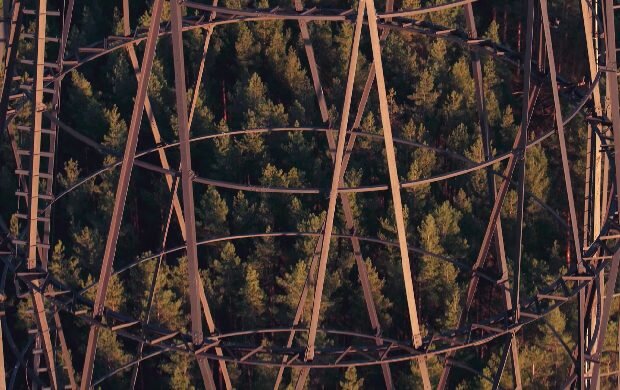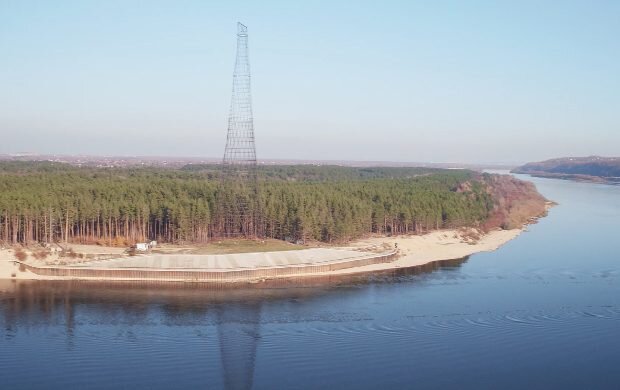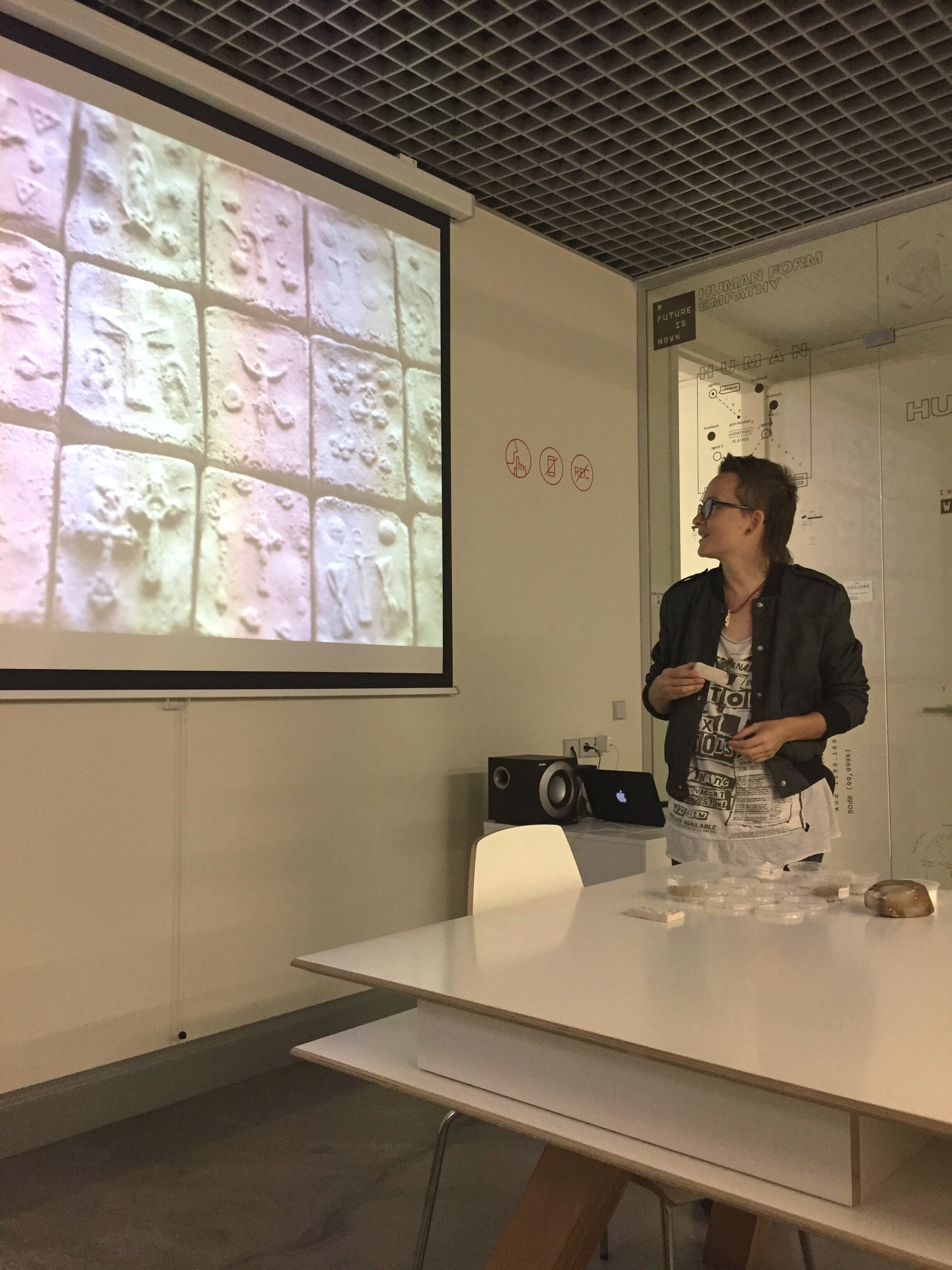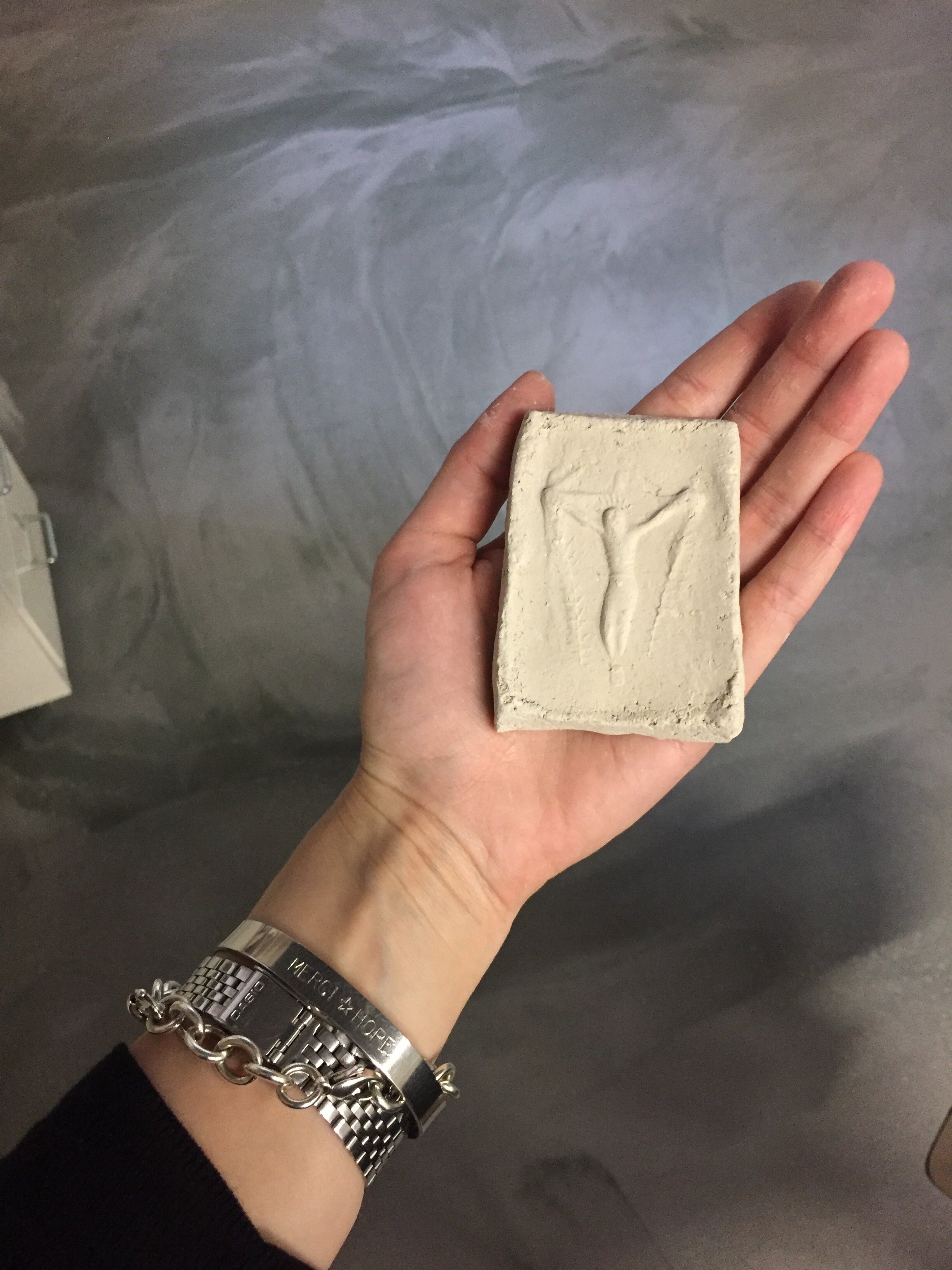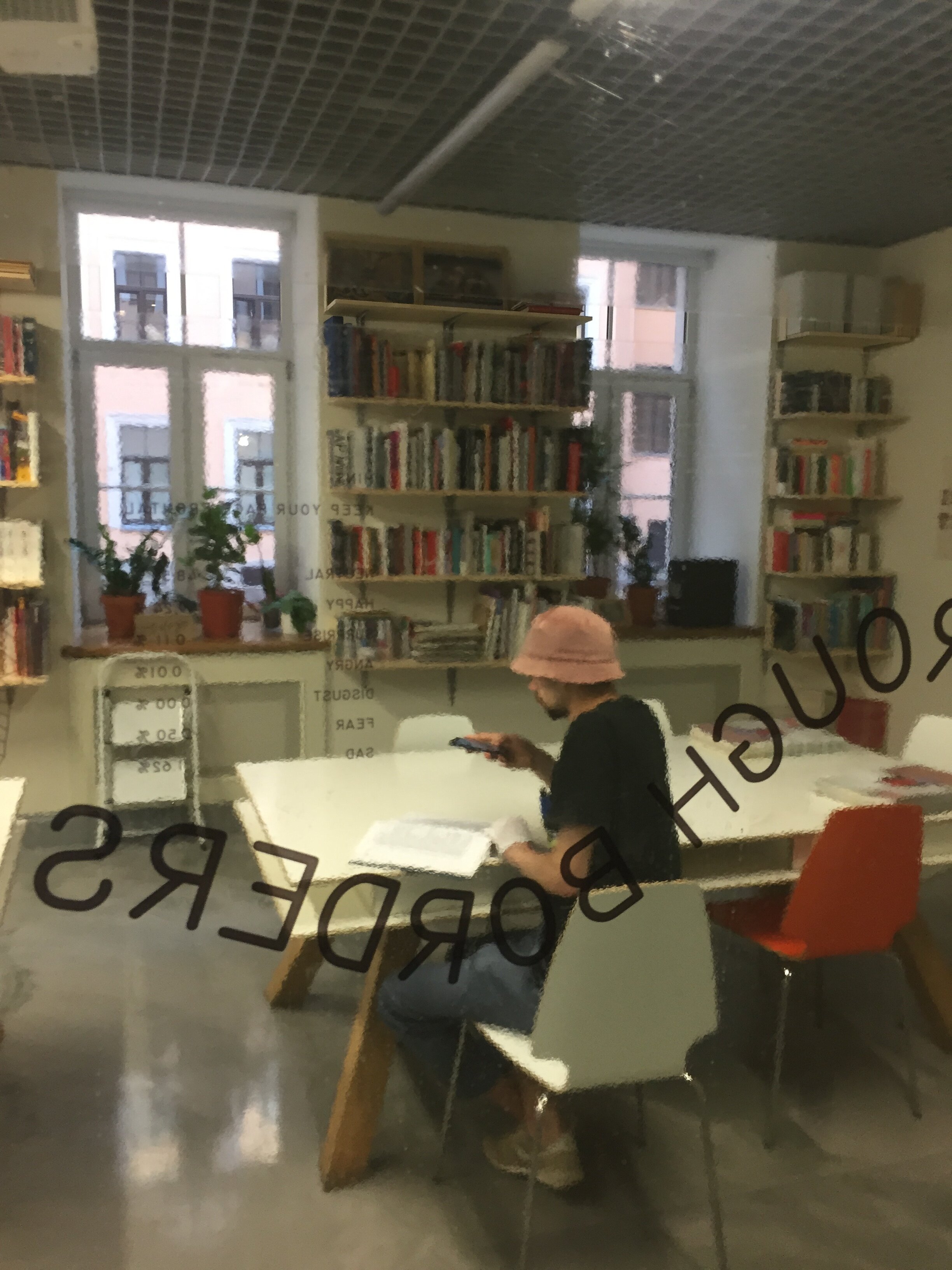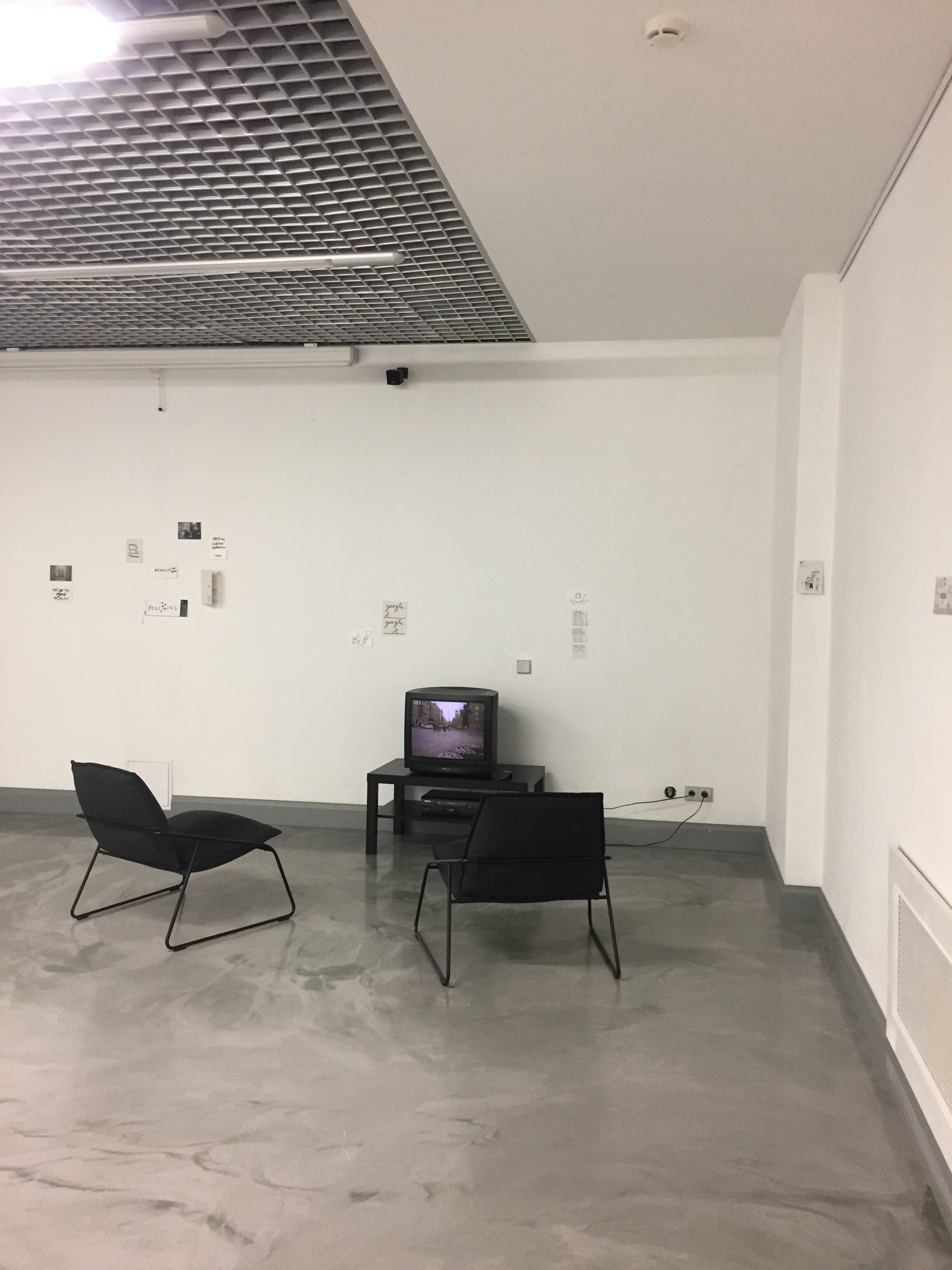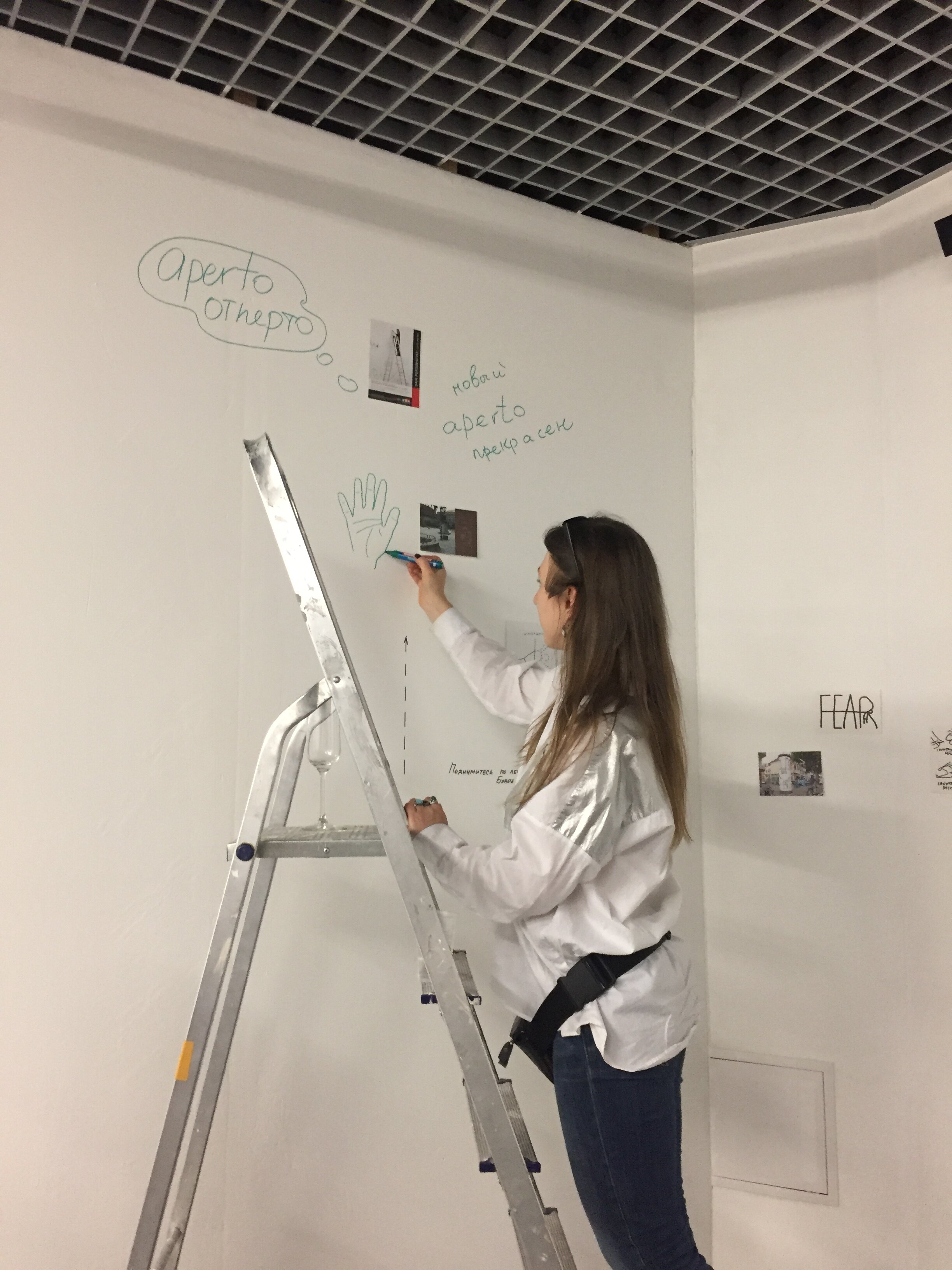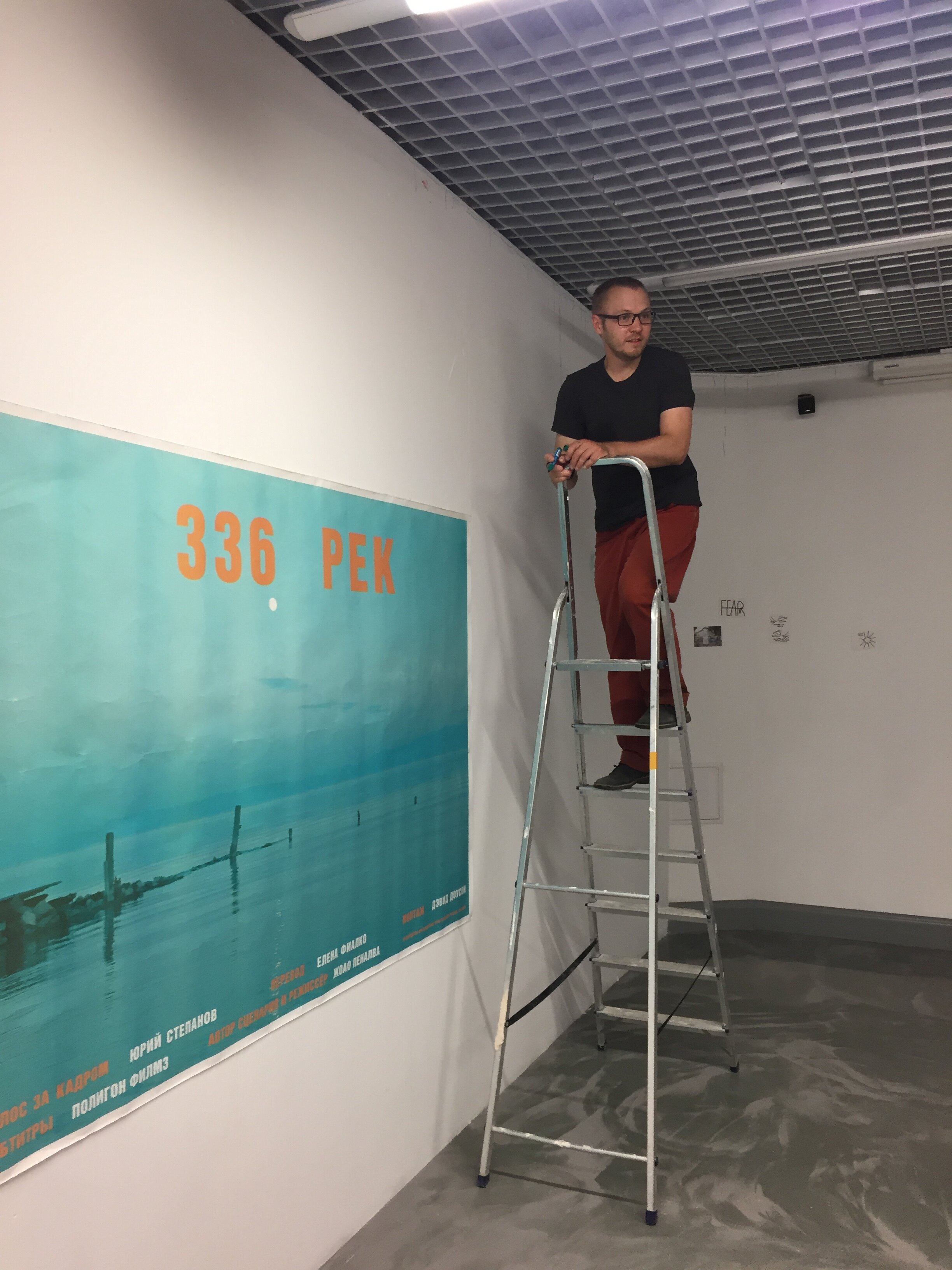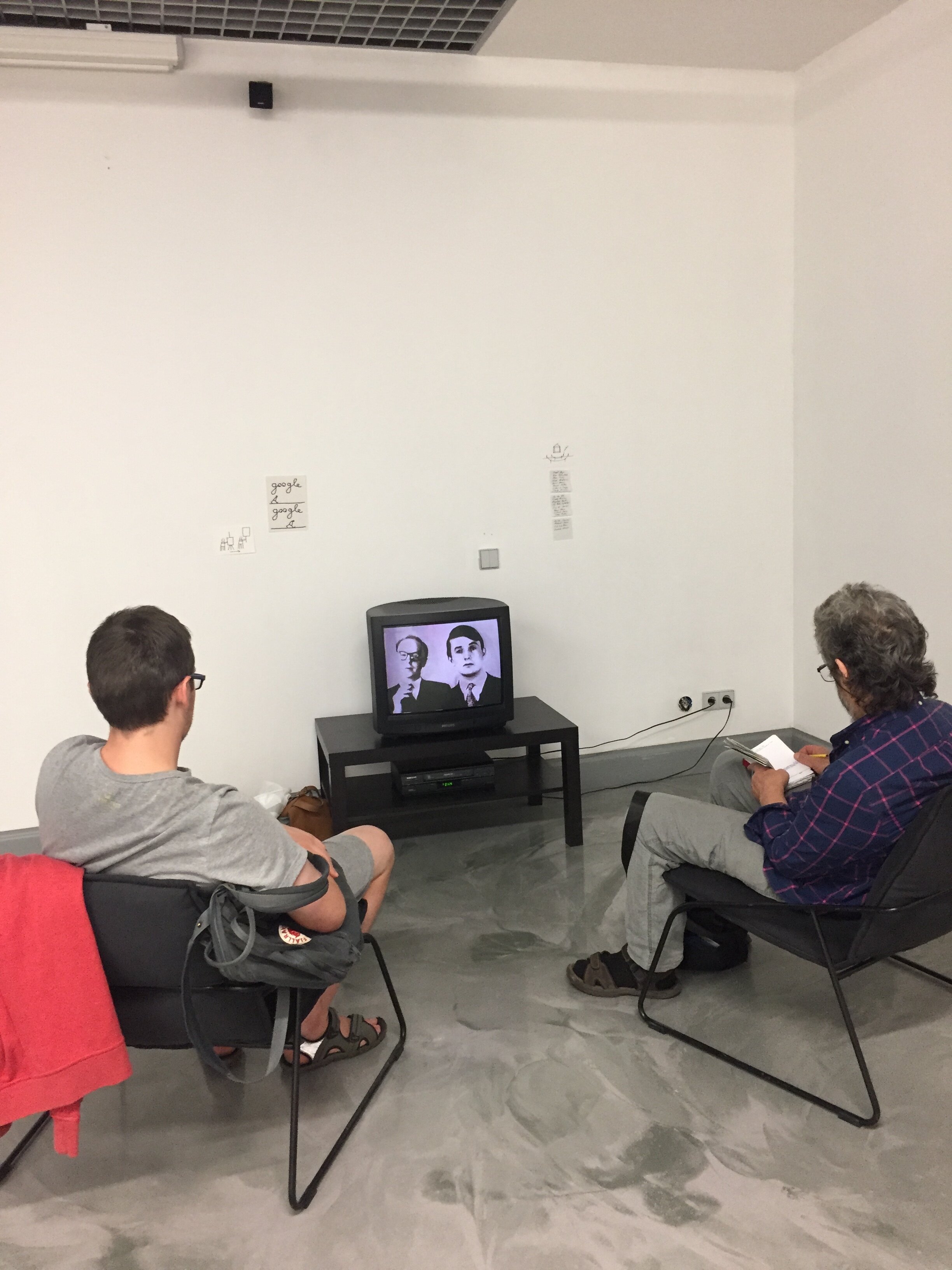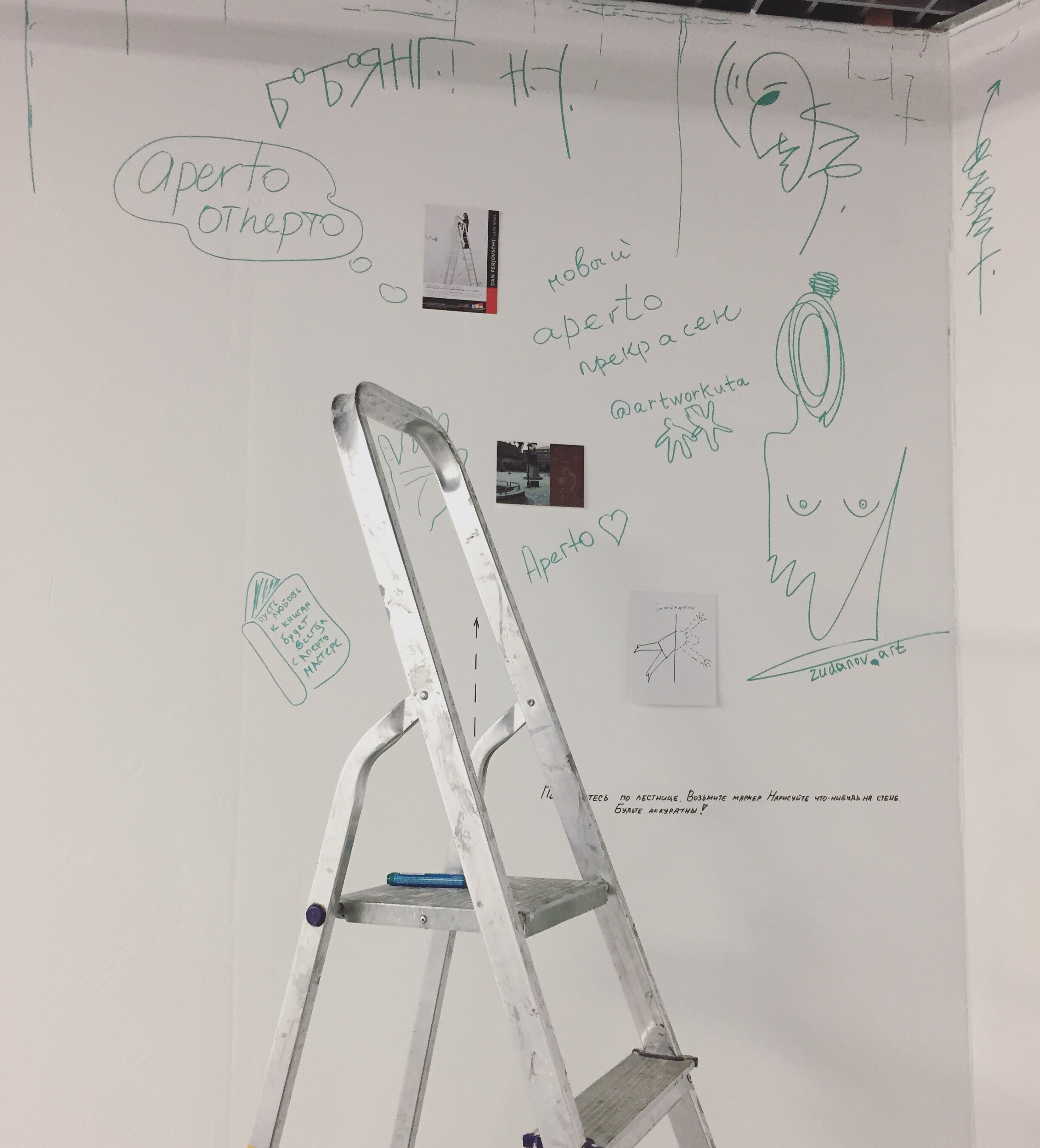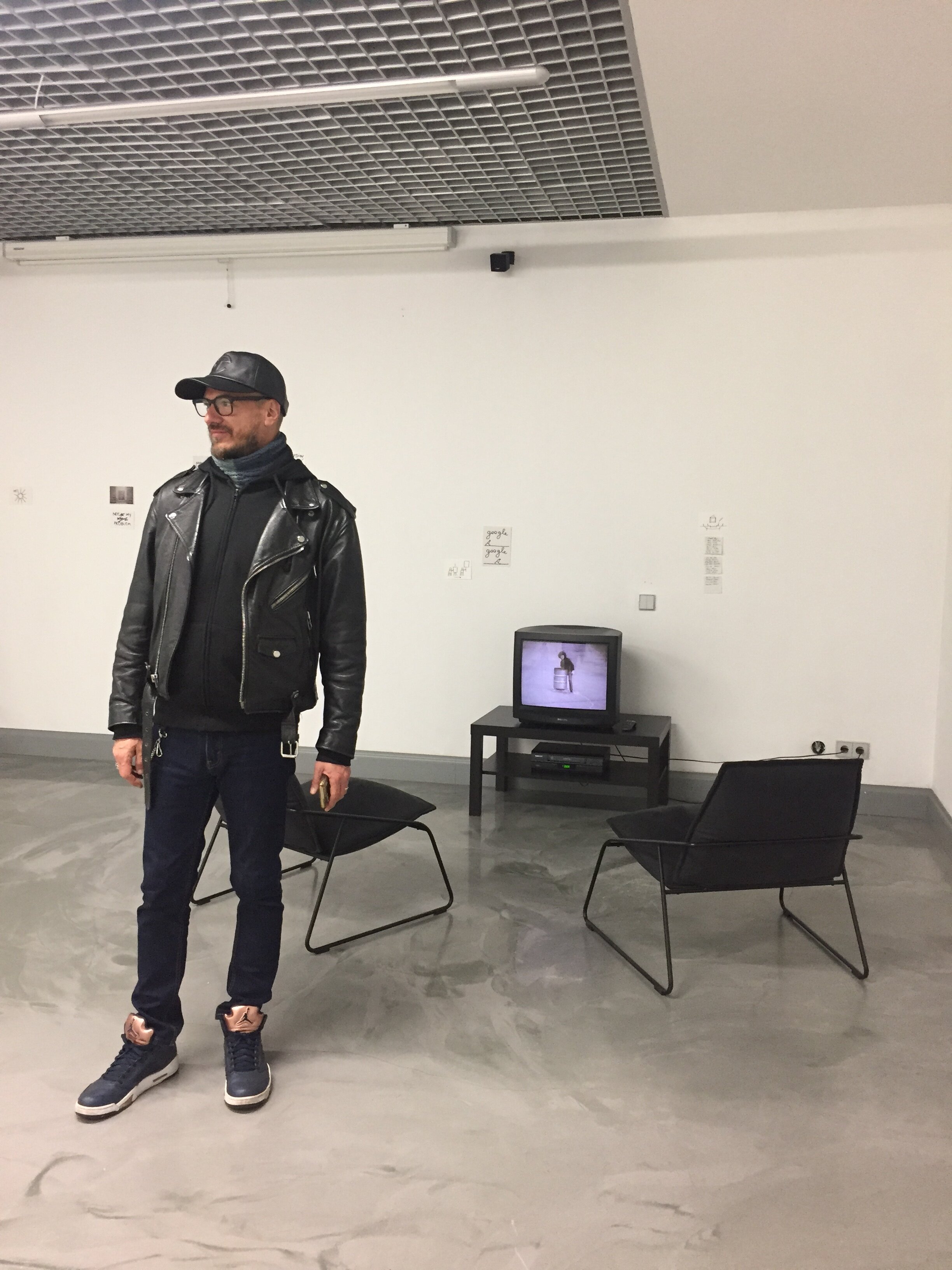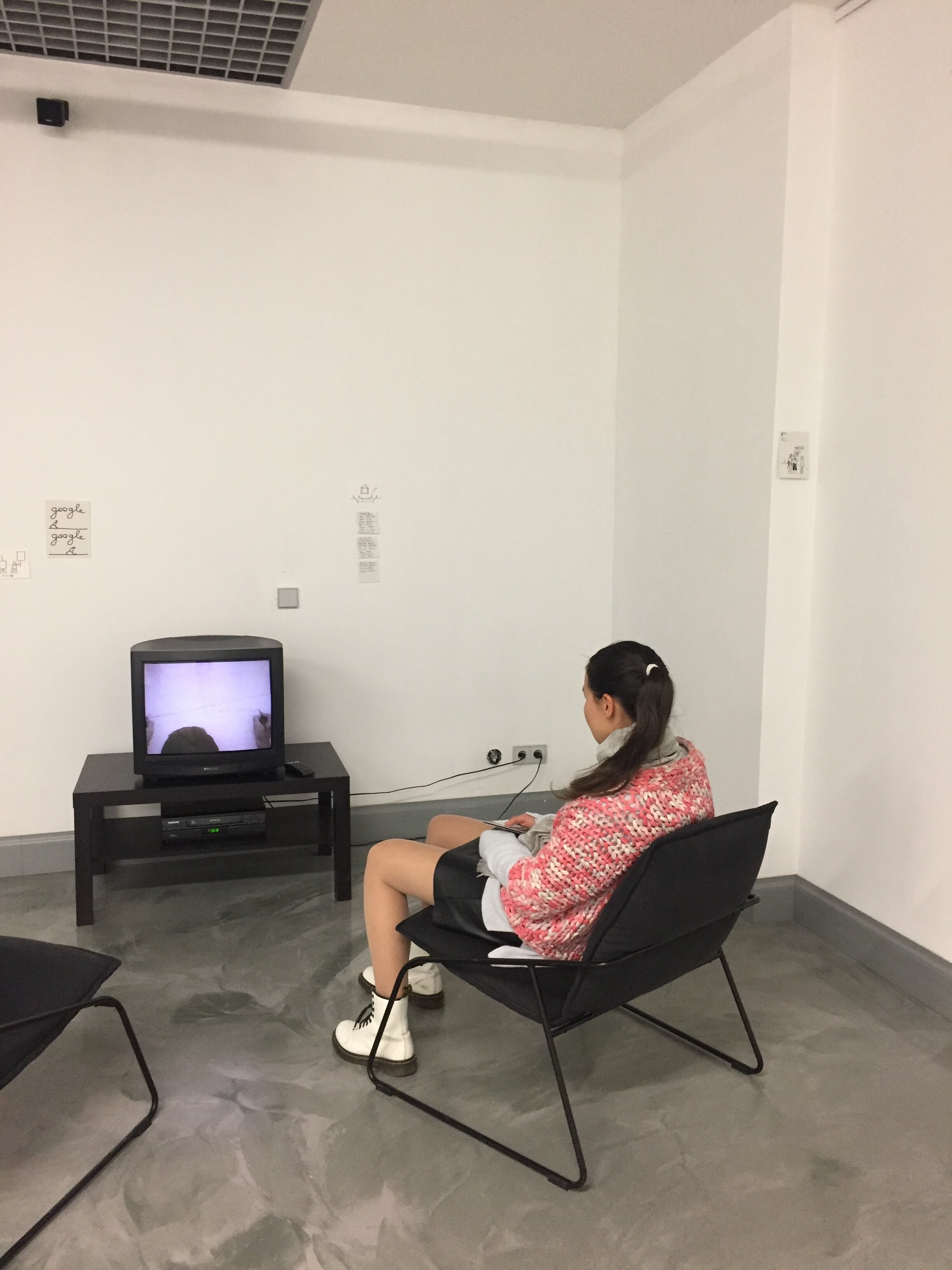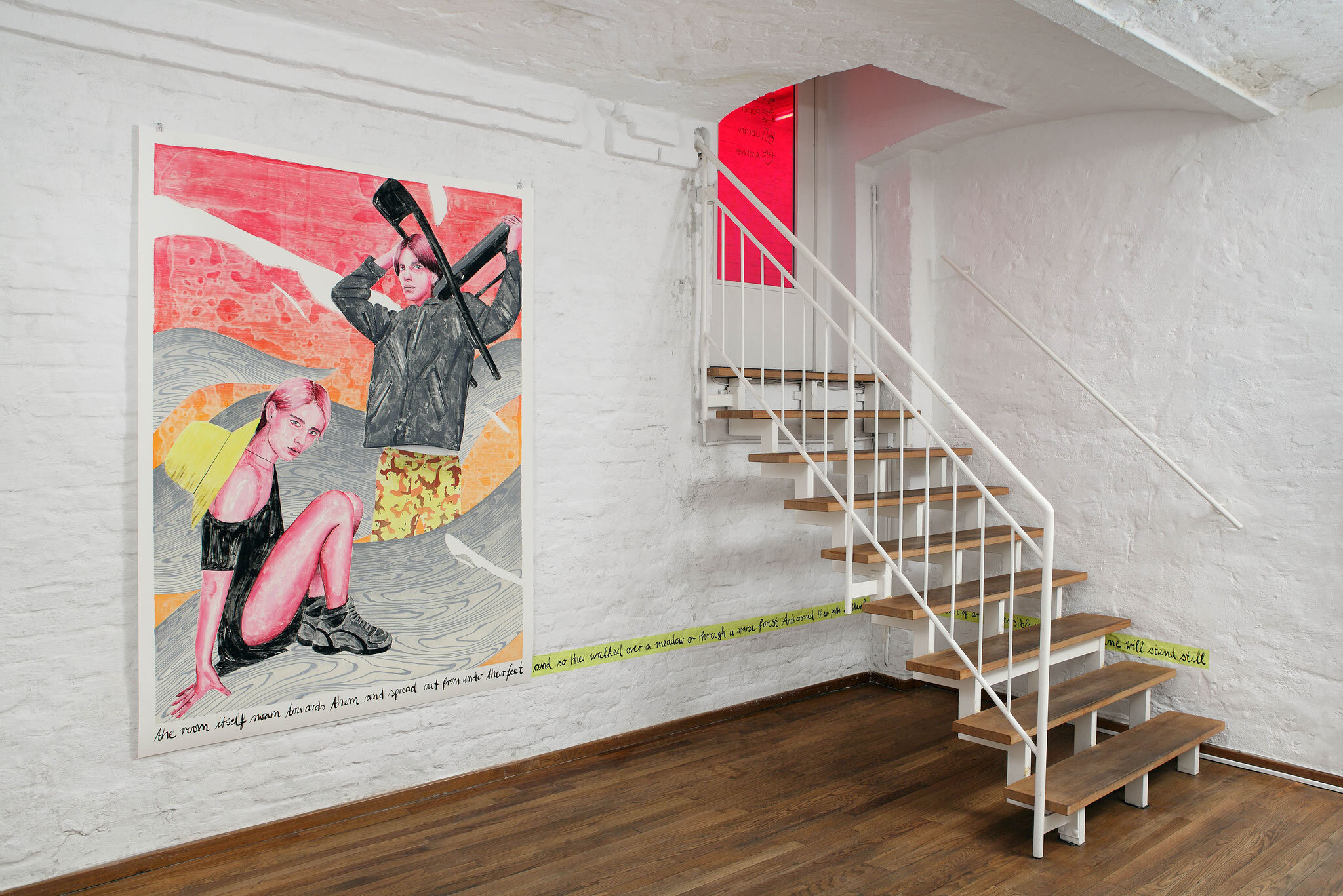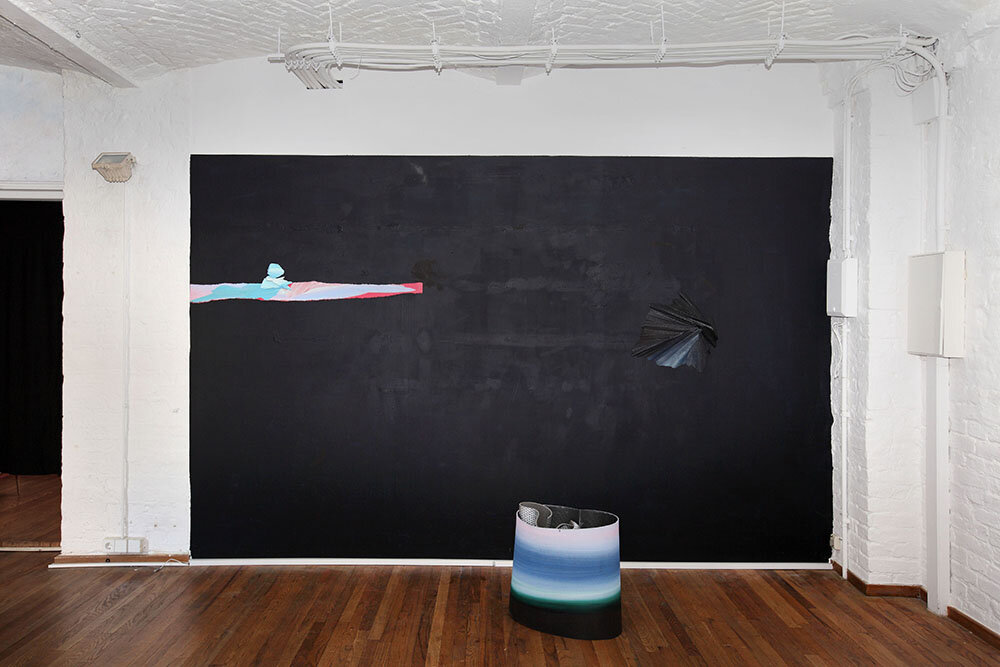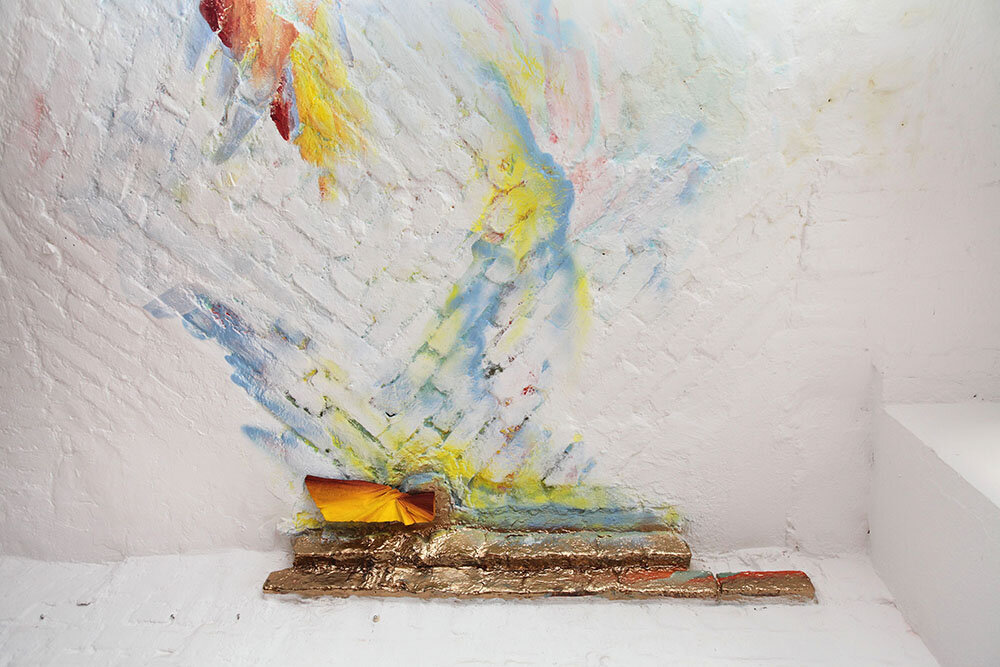Archive
Aperto Raum, Berlin
7 September — 14 October 2019
Matthieu Martin
AUTOPIA
Autopia is a project by Matthieu Martin about the utopian city of Avtozavod (Russia) and the avant garde towers of Russian architect Vladimir Shukhov. In 2015 the project started with a residency at the National Center for Contemporary Art in Nizhny Novgorod (NCCA). Through extensive research in newspapers, books and archival footage film, Matthieu Martin explored a mostly unknown collaboration between the Soviet government and the American company Ford at the beginning of the 1930s. Autopia encloses two films: The waltz of Vladimir, 2018 and The Russian Detroit, 2018.
La valse de Vladimir, 2018, video projection, color, sound, loop, 6’25’, dimensions variable. Ed. of 5, 2 A.P. Exhibition view at Aperto Raum, Berlin, 2019. Photo: Katharina Kritzler
The waltz of Vladimir, (mock-up) 2018. Video installation © Matthieu Martin
Aperto Reading Room, St Petersburg
24 August 2019
Artist talk with artist Masha Ru
“MUSEUM OF EDIBLE EARTH"
At the moment we are working on the concept of a Museum of Edible Earth — a cross-disciplinary research, which will combine the aspects of museum studies with an important emphasis on social design. The museum will invite the audience to review their knowledge about food and cultural traditions using creative thinking. The Museum of Edible Earth will address the following questions: What stands behind earth-eating tradition? Where does the edible soil come from? What are the possible benefits and dangers of eating earth? How do the material properties in earth affect its flavor? Its goal is to constitute an extensive collection of soils suggested for oral use from the most countries possible and, through their different cultural uses and histories, but also with the help of cross-disciplinary partnerships, workshops and collaborations, redesigning and reconsidering the earth. With the view to understand more the reality of contemporary geophagy, and also to constitute a research basis for the Museum of Edible Earth, the Masha Ru Studio has been building up an extensive database of the edible soils.
This project is now in the phase of preliminary research. Its start has been made possible due to the financial support of the Creative Industries Fund NL.
Aperto Reading Room, St Petersburg
26 July 2016 — 31 August 2019
Open Archive. Alone with the Self
“Today the avant-garde has taken on the form of opportunism. We all live in a state of avant-garde conformism. The only reality of our existence is constant changes, which we continually try to adapt to. My computer requires updates all the time. The form of existence for me and my friends is the self-update. We are constantly pressured by the need for self-modernization”.
Boris Grois
The Aperto Masters Reading Room presents the project “Open Archive. Alone with the Self”, in which every viewer becomes a participant, receiving the chance for a temporary respite in the race for endless updates, to reduce their work speed and return to the basic requirements of an art connoisseur – to look at a work and concentrate on it; to hear a text and catch its meaning.
The open archive presents video works of the 1970s from the Aperto collection presented to the reading room by collectors and patrons for the project, featuring such artists as John Baldessari, Gilbert and George, Nam June Paik and others.
The Russian-language poster for the 1998 documentary film “336 Rivers” by the Portuguese director João Penalva mysteriously ended up in Berlin, where it was given to the reading room by collector Egidio Marzona. João Penalva, who studied at the London School of Modern Dance in the early 1970s, waspassionate about the ideas of Merce Cunningham, and later worked with Pina Bausch and other choreographers. But by the mid-1970s, Penalva returned to painting, inspired by Robert Rauschenberg and Jasper Johns. In all Penalva’s works, the language of art and its revealed theatricality had particular significance. Without moving away from the author’s ideas, viewers find themselves alone not with the film but with the poster, with nature and the boundless expanse of Lake Baikal.
At the exhibition, we also offer you the chance to listen to a radio broadcast from 1997 from “Audio Arts Magazine”, where artists answer questions by Mel Gooding and William Furlong, and discuss their projects in dOCUMENTA X, where for the first time the artistic director was a woman – Catherine David. The broadcast is played on the Japanese Akai tape player from the 1980s, the first model to be mass-produced.
The cards, drawings and invitations by the Romanian artist Dan Perjovschi, the author of illustrations for the Aperto reading room, immerse us in the artistic and social context, exposing and criticizing the absurdity of our times.
“Open Archive” allows us to meet ourselves on the territory of art and temporarily pause ourselves.
Curated by Elena Yushina
Ala Savashevich. Pose. Position. Way. Video still, 2018
Aperto Raum, Berlin
6 June 2019 — 30 June 2019
Performance: 13 June, 19:00
Pose, Subordination, Festivities and Hedgehogs
YOUNG BELARUSIAN ARTISTS
Aperto Raum, in partnership with Slavs and Tatars’ residency program and Goethe Institute, is pleased to present an exhibition and public program with four young Belarusian artists: Uladzimir Hramovich, Sergey Shabohin, Ala Savashevich and Olia Sosnovskaya.
What is young, contemporary Belarusian art? What are the connecting points with global artistic practices? How resilient are post-Soviet realities? All these questions intrigued us when we first met artist, curator, and chief editor of Art Aktivist and KALEKTAR, Sergey Shabohin. His initial presentation on Belarusian contemporary art provided us a starting point to inquire further about young voices coming from Belarus and how to present this line of questions to a broader public in Berlin. Pose, Subordination, Festivities and Hedgehogs was conceived as a cooperation with Slavs and Tatars’ residency and mentoring program. In collaboration with the first phase of the residency, Aperto selected one project per artist to provide a small insight into the current topics of interests and artistic practises of the Belarusian art scene. Slavs and Tatars is an internationally-renowned art collective devoted to the area East of the former Berlin Wall and West of the Great Wall of China, known as Eurasia. The collective's residency and mentorship program offers artists, curators, researchers and scholars from Eastern Europe, the Caucasus and Central Asia a unique mentorship program at the collective’s studio in Berlin. During the program (from 1 to 3 months) , residential participate in one of Slavs and Tatars’ various activities–from transcultural research and knowledge production to the articulation and production of publications, lectures and exhibitions, work on their own practice and gain familiarity with the Berlin art community. This exhibition marks the beginning of a long-term cooperation between Slavs and Tatars’ residency program and Aperto Raum. Through providing a project space as well as a curatorial support for an exhibition and programming, Aperto is proud to present insights and artists for the first time in Berlin. The pilot version of the residency was launched in the Fall of 2018 with 4 artists from Minsk, Belarus and a curator from Yerevan, Armenia. Support is provided by Goethe Institute.
Curated by Christy Woody and Maria Isserlis
Aperto Raum, Berlin
31 May 2019
CELLO UNDERGROUND I.
with Konstantin Manaev
Programme:
GIOVANNI SOLLIMA (1962*) „Alone“
J.S. BACH (1685-1750) Suite in G major BWV 1007
JURI BUTSKO (1938-2015) Partita for Cello solo (1966), Germany Premier
KRZYSTOF PENDERECKI (1933*)„Per Slava“ (1986)
Marion Fink "I am a conversation, which has decided, it exists.” Exhibition view at Aperto Raum, Berlin, 2019
Aperto Raum, Berlin
24 April — 31 May 2019
MARION FINK
"I AM A CONVERSATION, WHICH HAS DECIDED, IT EXISTS."
A couple of months ago, Fink encountered the essays of a very interesting, but widely unknown, Russian writer and philosopher named Leonid Lipavskij (1904-1941). His work was not been translated until 2017, when Anja Dagmar Schloßberger found his writings in the Russian National Library in St. Petersburg. Lipavskij is considered to be one of the last representatives of the Russian Avant-Garde and was part of the so-called Russian Absurd. The themes of space and time and the questioning of reality that he spun so delicately into his absurd essays intrigued Fink, as these themes have also been prominent recently in her work.
In letters and essays that Lipavskil and his colleagues exchanged, they would comment lively on each others work. The last of such comments was written by Jakov Druskin (1902/1901-1980), ten years after the death of Lipavskij at the Leningrad front, while Druskin was still hoping that Lipavskij might have survived the war. Druskin, in his comment, was having an imagined dialogue with his friend and colleague, who was at this point in fact already dead for more than ten years.
For her show at Aperto Raum, Fink also wanted to create an imagined dialogue and visual commentary to the writings of Leonid Lipavskij. 78 years after his death, Fink reconnects to his words and interprets some of his writings from her own point of view. Inspired by his essays "Treatise of Water" and "On the Track of Horror," Fink imagins a world that could echo and reinterpret Lipavskij's writings. She combines her interpretive imagery with excerpts, and sometimes slightly adjusted, sentences of Lipavskij's original essays, giving them a new and contemporary context without using language herself. With this, Fink creates an imaginary conversation with the long dead writer, which by itself becomes a new work, that is summed up with a quote from his essay "Treatise of Water:" I am a conversation, which has decided, it exists.
Curated by Christy Woody and Maria Isserlis
Enikö Márton, Himmel über… Zwischenräume. Exhibition view at Aperto Raum, Berlin, 2019
Aperto Raum, Berlin
13 March 2019 — April 2019
Enikö Márton
Himmel über Zwischenräume
“I was wondering how to fit in most of the room, and I imagined a direct painterly encounter with the walls.” - Enikö Márton
In order to introduce her usual painterly themes and interests and to appear with the highest presence for the exhibition, Márton paints the interior of Aperto Raum, from the ceiling down. With her ray-structure-like color transitions she paints the room with acrylic color, thereby creating an atmosphere similar to that of sacred spaces.
For Márton, this is about the essence of painting and the idea of the potential function of the "craft" as in previous art historical periods. For her, it is important to connect the aesthetics and idea of art with the original idea of "function," such as in the Renaissance.
Making connections - is Márton’s motto during the creative act in painting and also for the audience, in order that they move beyond the visual into a spiritual connection with the work - like a meditation, standing with your head up to the ceiling. This encounter on a metaphysical level with the color spectra is the result of the light beams reflecting on the surface of the paint, thus creating a poetic story of the birth of color.
Curated by Christy Woody and Maria Isserlis
Aperto Raum, Berlin
2-26 Februar 2019
PART II
Anders Ehlin, Lucas Gutierrez, Protey Temen
Part of Vorspiel / Transmediale & CTM Festival
Continuing from last year's Horror Vacui exhibition, Aperto Raum is pleased to present Part II for Transmediale / Vorspiel. Taking thematic inspiration from the theme of this year's Sammlung Hoffmann, "Zweifel / Doubt," we go one step further and question how voids in contemporary digital media create and perpetuate uncertain realities for the consumer. Through the interconnected use of language, video media and audio, how can we both visualize and sonify “Zweifel / Doubt” that comes from absence?
The possibility of activating the Void through creative practice continues to be an important concern of contemporary artists. An exploration of the history of the iconography of the Void would go far beyond the scope of this introduction. Today, the sensory experience of absence or voids creates a feeling of doubt; through language, sound, and visual media we are confronted with environments of uncertainty on a daily basis. From social media and advertising, to newspapers and politics, our environment leaves room for doubt through the absences, which shape the perception of the world around us.
Curated by Christy Woody and Maria Isserlis


